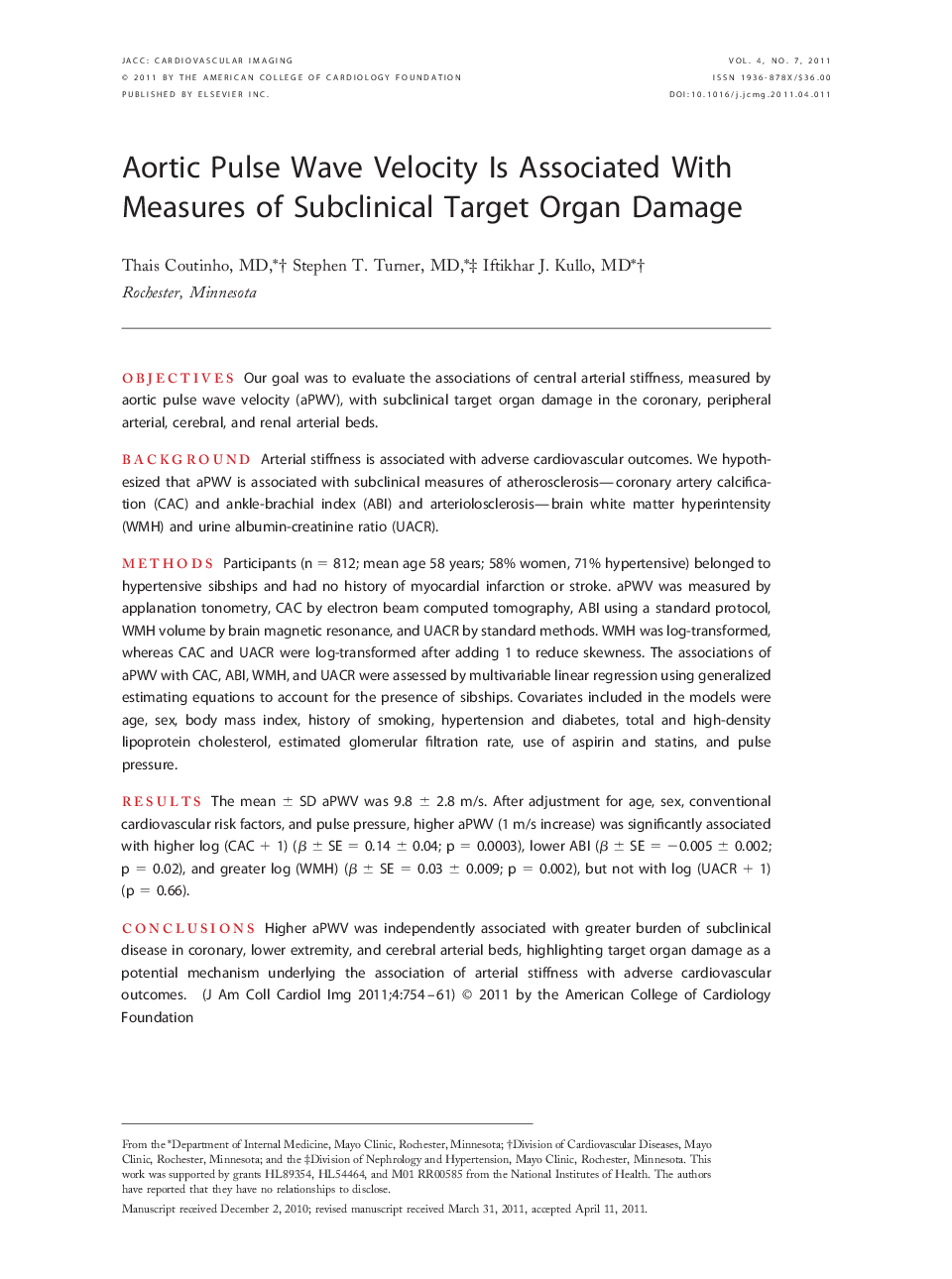| Article ID | Journal | Published Year | Pages | File Type |
|---|---|---|---|---|
| 2938862 | JACC: Cardiovascular Imaging | 2011 | 8 Pages |
ObjectivesOur goal was to evaluate the associations of central arterial stiffness, measured by aortic pulse wave velocity (aPWV), with subclinical target organ damage in the coronary, peripheral arterial, cerebral, and renal arterial beds.BackgroundArterial stiffness is associated with adverse cardiovascular outcomes. We hypothesized that aPWV is associated with subclinical measures of atherosclerosis—coronary artery calcification (CAC) and ankle-brachial index (ABI) and arteriolosclerosis—brain white matter hyperintensity (WMH) and urine albumin-creatinine ratio (UACR).MethodsParticipants (n = 812; mean age 58 years; 58% women, 71% hypertensive) belonged to hypertensive sibships and had no history of myocardial infarction or stroke. aPWV was measured by applanation tonometry, CAC by electron beam computed tomography, ABI using a standard protocol, WMH volume by brain magnetic resonance, and UACR by standard methods. WMH was log-transformed, whereas CAC and UACR were log-transformed after adding 1 to reduce skewness. The associations of aPWV with CAC, ABI, WMH, and UACR were assessed by multivariable linear regression using generalized estimating equations to account for the presence of sibships. Covariates included in the models were age, sex, body mass index, history of smoking, hypertension and diabetes, total and high-density lipoprotein cholesterol, estimated glomerular filtration rate, use of aspirin and statins, and pulse pressure.ResultsThe mean ± SD aPWV was 9.8 ± 2.8 m/s. After adjustment for age, sex, conventional cardiovascular risk factors, and pulse pressure, higher aPWV (1 m/s increase) was significantly associated with higher log (CAC + 1) (β ± SE = 0.14 ± 0.04; p = 0.0003), lower ABI (β ± SE = −0.005 ± 0.002; p = 0.02), and greater log (WMH) (β ± SE = 0.03 ± 0.009; p = 0.002), but not with log (UACR + 1) (p = 0.66).ConclusionsHigher aPWV was independently associated with greater burden of subclinical disease in coronary, lower extremity, and cerebral arterial beds, highlighting target organ damage as a potential mechanism underlying the association of arterial stiffness with adverse cardiovascular outcomes.
